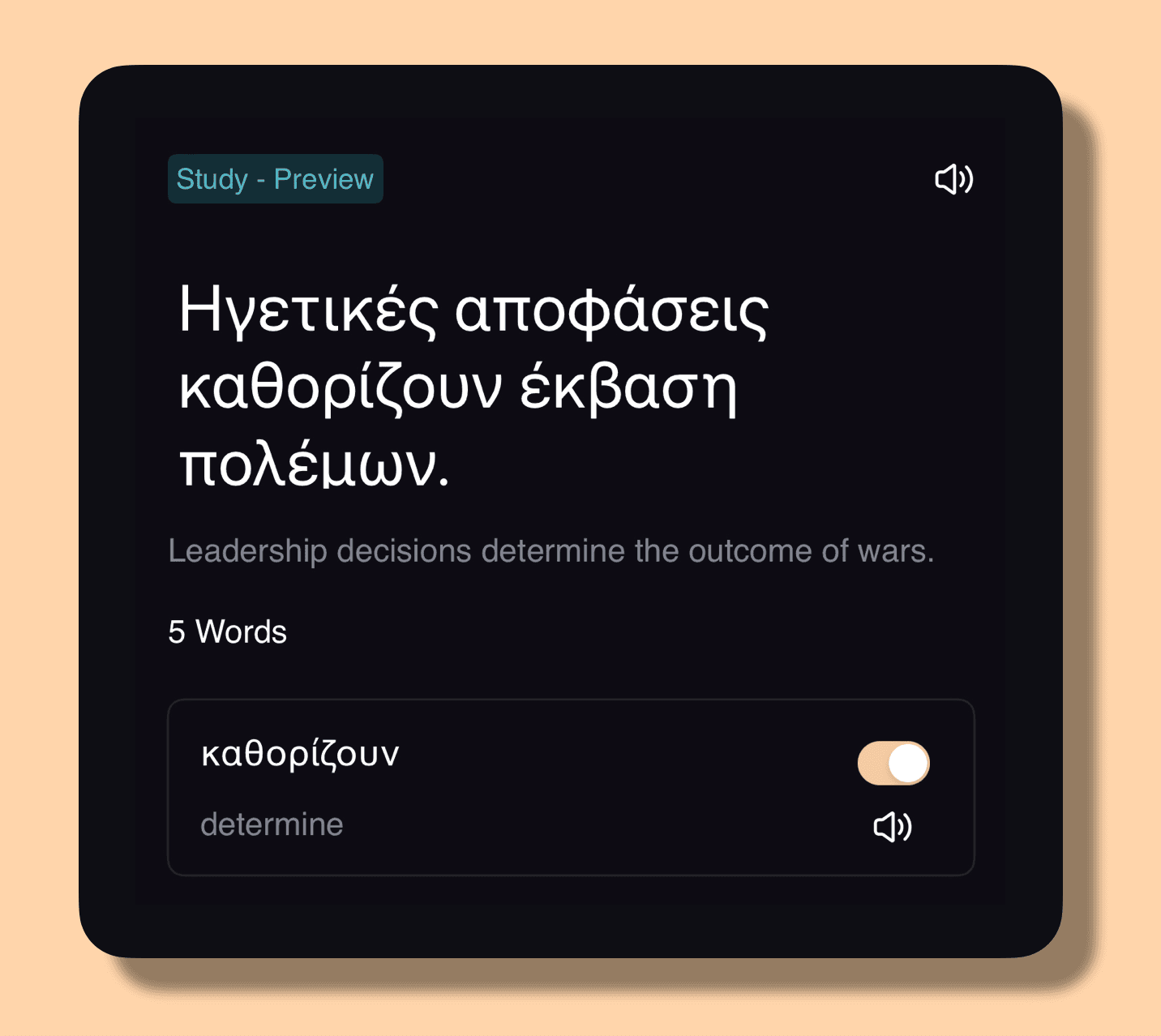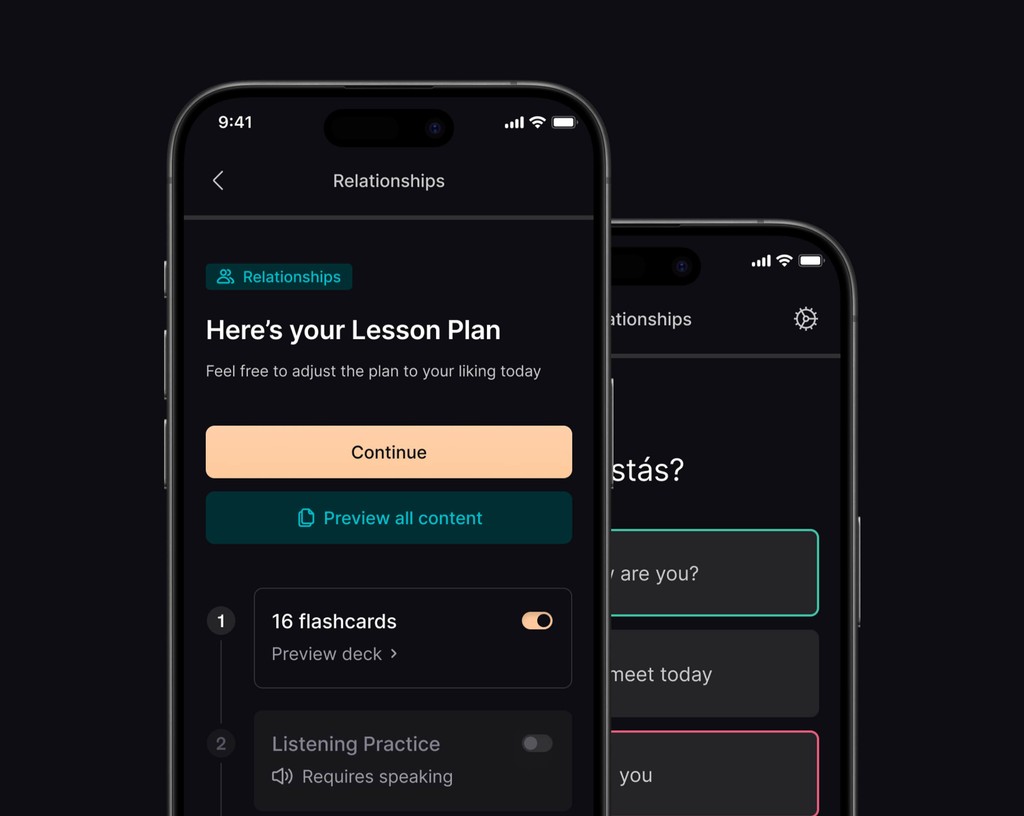Machine Translation: Immersive Learning in the Age of AI
Jun 5, 2024
Sam Martin
Machine translation, often vilified for its inaccuracies and lack of nuance, is proving to be a powerful tool to achieve true fluency. At Culture Shock, we've embraced this unconventional approach, harnessing the power of machine translation to create an immersive, context-driven learning experience.
Picture yourself in an Italian restaurant, perusing the menu. You have a gluten intolerance, so you need to know if the dish you're considering is safe to eat. You point to the fettuccine and ask the waiter, "Gli ingredienti di questa pasta alla fettuccina sono senza glutine?"
Italian sentence:
"Gli ingredienti di questa pasta alla fettuccina sono senza glutine?"
English translation:
"Are the ingredients in this fettuccine pasta gluten-free?"
Literal translation:
- Gli: the
- ingredienti: ingredients
- di: of
- questa: this
- pasta: pasta
- alla: with
- fettuccina: fettuccine
- sono: are
- senza: without
- glutine: gluten
This is the type of real-world scenario our language learning app prepares you for. By exposing you to practical, everyday sentences like this one, we help you develop the skills and confidence to navigate common situations.
Our app presents this sentence to you, along with its English translation: "Are the ingredients in this fettuccine pasta gluten-free?" But we don't stop there. We also provide a word-by-word literal translation, allowing you to see the individual components that make up the sentence.
This approach reveals the intricacies of Italian grammar, such as the use of plural articles (gli), the agreement of adjectives with nouns (questa pasta), and the construction of compound prepositions (alla, from a + la). By breaking down the sentence into its constituent parts, we enable you to start piecing together the puzzle of the Italian language.
Now, imagine you're learning Japanese and you come across the sentence: "今夜は友達とぶらぶらする予定です。" (Kon'ya wa tomodachi to burabura suru yotei desu.) Our app presents this sentence to you, along with its English translation: "I'm planning to hang out with friends later tonight."
Japanese sentence:
"今夜は友達とぶらぶらする予定です。"
(Kon'ya wa tomodachi to burabura suru yotei desu.)
English translation:
"I'm planning to hang out with friends later tonight."
Literal translation:
- 今夜: tonight
- は: topic marker
- 友達: friends
- と: with
- ぶらぶら: mosquito
- する: to do
- 予定: plan
- です: polite copula
But there's a hidden gem in this sentence that traditional language learning methods might overlook. The word "ぶらぶら" (burabura), which can mean "to hang out" or "to loiter," is also the Japanese word for "mosquito." This homonym hints at a potential negative connotation to the concept of hanging out or loitering in Japanese culture.
By exposing learners to these types of linguistic nuances, our app goes beyond simple translation and helps learners develop a deeper understanding of the language and culture. The literal translation we provide breaks down the sentence word by word, revealing the double meaning of "ぶらぶら" (burabura) and encouraging learners to consider the cultural implications.
Through machine translation, we are able to expose learners to intricacies and nuances of the language that they might otherwise miss.
The Beauty of Inferential Learning
From childhood, we learn our native language not through memorizing conjugation tables and grammar rules, but by inferring meaning from context. We hear a phrase, observe its usage, and gradually piece together its significance. This inferential process is at the heart of our language learning philosophy.
By presenting learners with machine-translated sentences and phrases, we provide just enough information to kickstart the inferential process. Learners must actively engage with the language, drawing connections and deriving meaning from the context. This cognitive heavy lifting is precisely what leads to deeper, more lasting language acquisition.
Embracing Imperfection
Machine translation is far from perfect, and that's precisely why it's such an effective teaching tool. Its occasional inaccuracies and awkward phrasings mirror the challenges of real-world language encounters. Native speakers don't communicate in textbook-perfect prose; they use slang, idioms, and regional variations that can throw learners for a loop.
By learning through machine translation, students develop the adaptability and problem-solving skills needed to navigate life. They learn to embrace ambiguity, to derive meaning from imperfect input, and to communicate effectively despite linguistic roadblocks.
The Power of Immersion
Traditional language learning often relegates students to the role of passive recipients, bombarding them with rules and memorization tasks. In contrast, our approach immerses learners in machine-translated content, where they can naturally begin to internalize the patterns and structures of the language. They develop an intuitive grasp of grammar and syntax, much like a child absorbing their native tongue.
The Future of Language Learning
As machine translation continues to evolve, so too does its potential as a language learning tool. With each advancement in artificial intelligence and natural language processing, machine translation inches closer to capturing the nuance and context that are so crucial to language mastery. We can already see glimpses of this in today's largest LLMs!
At Culture Shock, we're at the forefront of this language learning revolution. If you are interested in using our application, becoming a content partner, or exploring the possibilities of integrating your organizations data, you can email me at sam@cultureshock.ai.
***
Sam Martin is the CEO of Culture Shock AI.
Ready to learn?
Get immersed
in any language
Join CultureShock today and learn to converse with confidence, anywhere in the world.




